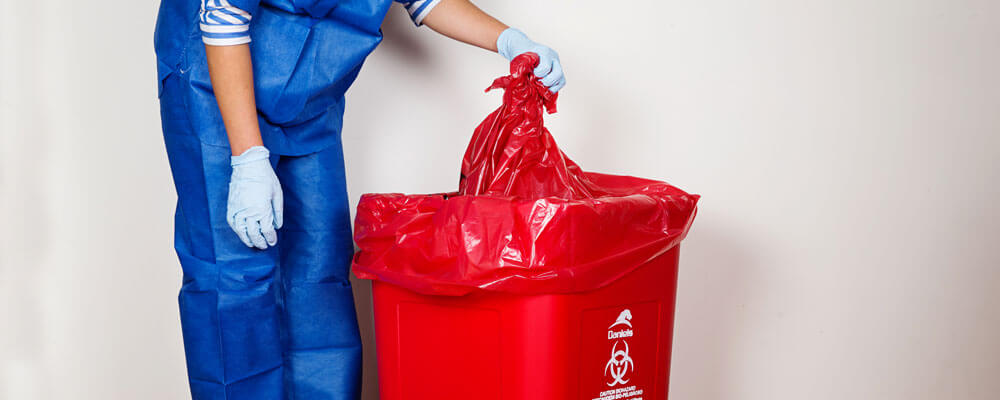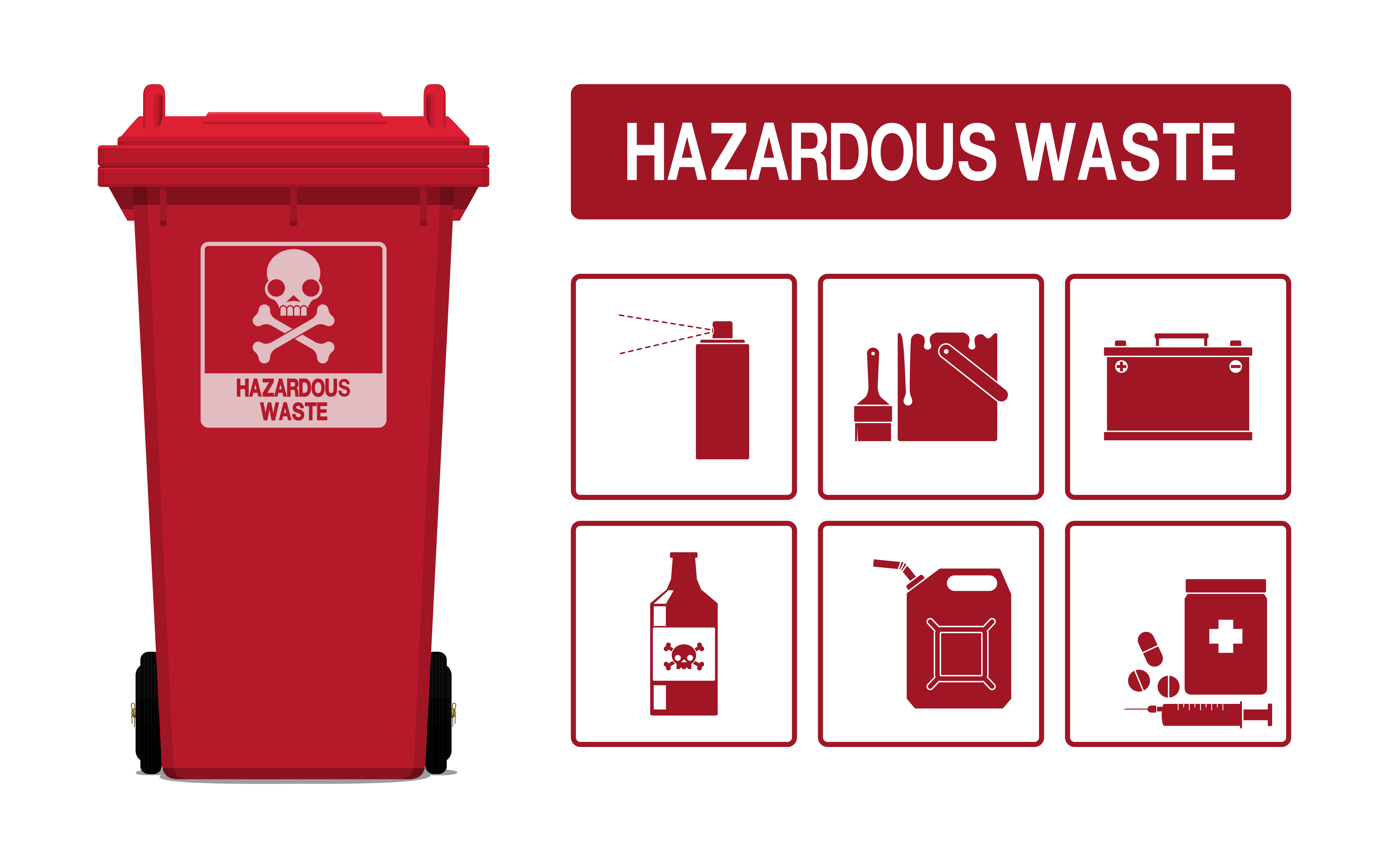Proactive Health Solutions: Choosing the very best Medical Waste Removal Near You
Wiki Article
Reliable and Environmentally Friendly Medical Waste Disposal Solutions
In the ever-evolving area of health care, the concern of clinical waste disposal remains a topic of vital relevance. As health centers, clinics, and other healthcare facilities aim to give high quality individual treatment, they should also address the difficulty of efficiently and sensibly disposing of their waste.Waste Segregation Practices
Effective waste segregation methods are important to guarantee the secure and appropriate disposal of clinical waste. Medical waste, which includes products polluted with possibly transmittable materials, have to be taken care of in a way that minimizes the threat of harm to both public health and the environment. Proper waste partition plays an important role in attaining this goal.Waste segregation involves the separation of various types of waste based on their attributes and potential threats. This process guarantees that each sort of waste is dealt with and taken care of suitably (medical waste disposal services with WasteX). It begins at the factor of generation, where medical care centers need to have designated containers and containers for various waste categories, such as sharps, infectious waste, pharmaceutical waste, and non-hazardous waste
By segregating clinical waste at the source, doctor can stop cross-contamination and minimize the danger of direct exposure to infectious agents. This practice additionally helps with the recycling and recuperation of specific products. Setting apart and reusing tidy plastics and glass reduces the need for raw products and decreases the environmental impact of medical waste disposal.

Autoclaving and Sanitation Methods
In order to make sure the secure and correct disposal of clinical waste complying with reliable waste segregation methods, medical care facilities should employ autoclaving and sanitation methods. Autoclaving is an extensively made use of method that makes use of high-pressure vapor to sterilize medical waste.An additional generally used sterilization technique is chemical sanitation. This entails treating the waste with chemicals such as ethylene oxide or hydrogen peroxide, which kill microbes by interrupting their mobile framework. Chemical sanitation is usually made use of for heat-sensitive products or products that can not stand up to the high temperature levels of autoclaving. Nevertheless, it is very important to keep in mind that chemical sterilization needs correct handling and disposal of the chemicals made use of, as they can be harmful to human wellness and the atmosphere otherwise managed correctly.
On-Site Waste Therapy Equipments
Medical care facilities have actually applied on-site waste treatment systems to address the disposal of clinical waste in a effective and secure manner. These systems offer a hassle-free and affordable remedy for taking care of medical waste created within the center. On-site waste treatment systems utilize various technologies to get rid of and treat of clinical waste on-site, lessening the requirement for transportation to off-site centers.One commonly used on-site waste therapy system is the microwave modern technology. Another system is the chemical disinfection innovation, which includes treating medical waste with chemicals to kill pathogens and reduce its dangerous nature. medical waste disposal services with WasteX.
On-site waste treatment systems provide a number of advantages. Firstly, they eliminate the danger of clinical waste being messed up during transport, decreasing the possibility for contamination and direct exposure to harmful materials. Furthermore, these systems aid health care facilities follow waste management regulations by supplying a convenient and effective disposal approach. In addition, on-site treatment systems reduce the overall ecological influence of clinical waste by reducing transportation and the need for garbage dump area.
Recycling and Repurposing Initiatives
As medical care facilities make every effort for lasting waste administration practices, they are significantly checking out recycling and repurposing campaigns as a way of minimizing the environmental effect of clinical waste. Reusing and repurposing efforts entail discovering ingenious methods to recycle or change clinical waste into new products or materials. This not only helps to lessen the quantity of waste that winds up this hyperlink in burners or landfills however additionally lowers the intake of resources and power required for making brand-new items.
One instance of reusing in the health care sector is the reprocessing of single-use medical gadgets. These devices, such as surgical tools or catheters, are typically disposed of after a single use. Nevertheless, advancements in innovation and stringent sterilization processes have actually made it feasible to safely tidy, disinfect, and reuse these gadgets numerous times. This not only reduces the amount of waste generated but also conserves healthcare centers significant costs linked with purchasing new devices.
Another recycling effort involves the recycling of plastic containers, such as drug containers or syringe housings. These containers can be collected, sorted, and sent to recycling facilities where they are refined, thawed down, and transformed into new plastic products. This aids to conserve resources and reduce the demand for virgin plastic production.
In enhancement to recycling, repurposing campaigns include locating different uses for medical waste. Shredded paper waste from medical records or packaging products can be repurposed as bed linen product for animals or as insulation material. Similarly, organic waste such as food scraps from healthcare facilities can be composted and utilized as fertilizer in gardens or farming areas.

Renewable Resource Solutions
One reliable method to minimizing the ecological effect of medical care procedures entails executing sustainable energy services. Medical care facilities, such as medical facilities and centers, take in considerable quantities of energy for different purposes, including lighting, heating, cooling, and operating medical devices. By transitioning to eco-friendly power sources, these centers can significantly decrease their carbon footprint and add to a more lasting future.
Executing renewable resource services in healthcare facilities not only decreases greenhouse gas discharges but also offers long-term price savings. While the preliminary financial investment in eco-friendly energy infrastructure may be greater, the lasting functional prices of renewable resource systems are substantially lower compared to standard fossil fuel-based power resources. In addition, renewable resource systems are dependable and can provide a steady and undisturbed power supply, making certain continuous healthcare solutions also during power outages or emergencies.
Verdict
In final thought, implementing reliable and ecologically pleasant clinical waste disposal services is important for keeping a sustainable medical care system. By adopting waste partition practices, autoclaving and sterilization strategies, on-site go to this site waste treatment systems, recycling and repurposing initiatives, and eco-friendly energy options, healthcare centers can significantly decrease their ecological impact.It starts anchor at the factor of generation, where healthcare centers need to have designated containers and containers for various waste classifications, such as sharps, transmittable waste, pharmaceutical waste, and non-hazardous waste.
In order to guarantee the risk-free and correct disposal of clinical waste complying with reliable waste partition techniques, healthcare centers must employ autoclaving and sterilization methods.Medical care facilities have carried out on-site waste therapy systems to address the disposal of medical waste in a reliable and safe manner. On-site waste treatment systems use various modern technologies to get rid of and treat of medical waste on-site, reducing the requirement for transportation to off-site facilities.
As healthcare facilities strive for sustainable waste monitoring techniques, they are increasingly exploring recycling and repurposing initiatives as a means of decreasing the environmental effect of medical waste. - medical waste removal service
Report this wiki page